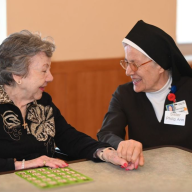By Prem Calvin Preshad
Across Queens this week, residents with East Asian origins will be celebrating the Mid-Autumn Festival, which falls on the 15th day of the eighth lunar month, also known as the autumn equinox, typically a full moon.
As these traditions trace back to ancient times, the origins of the festival’s observation vary from country to country, though the unifying commonality is the autumnal harvest. As is the case with most harvest traditions, the occasion is observed with family reunions, feasting and giving thanks.
As this is also an auspicious time for cultures that observe the lunar calendar, people may pray for success or other aspirations.
The Chinese celebration of the festival dates back to ancient times, originating in the worship of the moon and mountain gods in favor of a bountiful harvest. Widespread celebration of the festival throughout China began in the Song dynasty, which ruled from 906-1279.
Chinese legends associate Chang’e, the goddess of immortality, with the moon, as she took up residence there after fleeing earth. As such, the moon has come to represent life and fertility in Chinese tradition and Chang’e is honored in most festival observances.
Especially in Chinese communities, a hallmark of the festival are mooncakes, a dense pastry filled with red bean, lotus seed or nut filling. More luxurious versions have a whole egg yolk for a center, representing the moon. The crust, which, depending on the region, can be either chewy or flaky, is stamped with a design or inscription, invoking the auspiciousness of the occasion or the full moon.
The cakes are either elaborately boxed or packaged in tins and exchanged between family members and business associates. Owing to its dense filling, this relatively small cake is cut into slices and consumed with tea.
One is generally able to find the Cantonese and Taiwanese varieties at Asian specialty supermarkets and bakeries across the borough, especially since few households are able to bake these cakes. In modern times, many variations, such as those molded into animal shapes or unconventional fillings such as ice cream, glutinous rice and artificial flavoring, also proliferate around this time of year.
In Vietnam, the festival is associated with the perceived innocence of children serving as a link with the natural world. Animism is deeply ingrained in Vietnamese culture at the celebration of the festival, called “Tet Trung Thu” in Vietnamese. Lore about the festival involves lighting lanterns and participating in lion dances.
The Korean iteration of the festival is Chuseok, or in nomenclature, Korean Thanksgiving. The tradition of Chuseok likely dates back to the Korean Kingdom of Silla (57 B.C.-A.D. 935), which had won a decisive victory over its southern rival, the Kingdom of Baekje.
Since then, the Korean people have associated Chuseok with the hope for a brighter future.
A traditional dish made for Chuseok is songpyeon, a stuffed and flavored rice cake steamed with pine needles, which gives it a distinctive aroma. Unlike Chinese mooncakes, songpyeon is shaped as a half moon and need not be sliced.
At its inception, the festival was commemorated with competitions, particularly in weaving and martial arts. In modern Korea, the day is marked with visits to the tombs of ancestors, an exodus from urban areas to one’s hometowns and feasting with relatives.
The preceding four generations are honored on the morning of Chuseok, and offerings of rice wine (soju), rice, vegetables and meat are made at graves.































